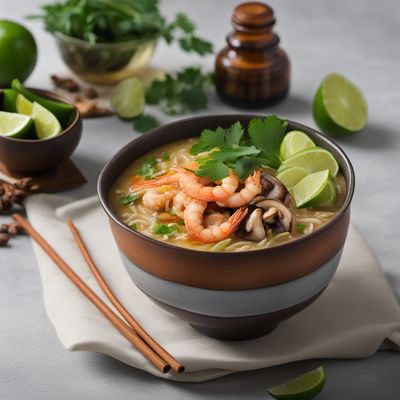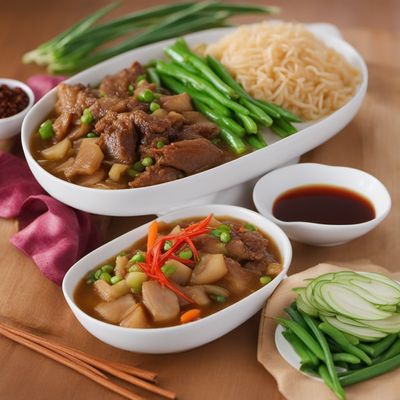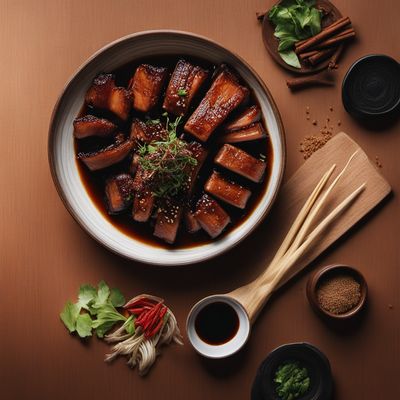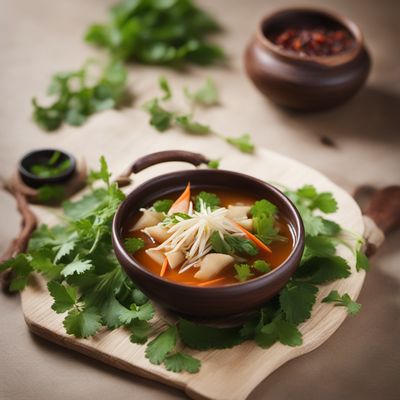
Ingredient
Common honeybush tea
The Sweet Sip: Discovering the Delights of Honeybush Tea
Common honeybush tea is a herbal infusion made from the leaves and stems of the honeybush plant. It has a naturally sweet taste with hints of honey and a pleasant aroma reminiscent of apricots or peaches. The tea has a reddish-brown color and a smooth, slightly viscous texture. It is often consumed hot or cold and can be enjoyed plain or with a touch of honey or lemon.
Origins and history
Honeybush tea is native to South Africa, specifically the Western and Eastern Cape regions. It has been consumed by the indigenous Khoi and San people for centuries due to its medicinal properties and pleasant taste. The tea gained popularity in recent years and is now enjoyed worldwide for its unique flavor and potential health benefits.
Nutritional information
Honeybush tea is naturally caffeine-free and low in calories. It is rich in antioxidants and contains various minerals, including potassium, calcium, and magnesium. The tea is also known for its potential anti-inflammatory and digestive properties.
How to select
When selecting honeybush tea, look for loose-leaf or bagged tea that is made from high-quality honeybush leaves and stems. The tea should have a fresh and aromatic scent. Consider the desired flavor intensity and brewing method when choosing between different varieties or blends of honeybush tea.
Storage recommendations
To preserve the freshness and flavor of honeybush tea, store it in an airtight container away from moisture, heat, and strong odors. Keep it in a cool, dark place to prevent the tea from deteriorating. Proper storage can help maintain its quality and extend its shelf life.
How to produce
Honeybush tea is primarily produced in South Africa, where the honeybush plant is cultivated. It requires a specific climate and soil conditions to thrive. The leaves and stems are harvested, dried, and processed to create the tea. Honeybush tea can also be grown in other regions with similar environmental conditions.
Preparation tips
To prepare honeybush tea, steep 1 teaspoon of loose-leaf tea or 1 tea bag in 8 ounces of hot water for 5-7 minutes. Adjust the steeping time based on personal preference for a stronger or milder flavor. Honeybush tea can be enjoyed plain or with a touch of honey or lemon. It can also be used as a base for iced tea or blended with other herbal teas for added complexity.
Substitutions
Rooibos tea, chamomile tea
Culinary uses
Honeybush tea is commonly enjoyed as a hot or iced beverage. It can be consumed plain or with a touch of honey or lemon to enhance the flavor. Honeybush tea can also be used as a base for herbal tea blends or mixed with other ingredients to create unique tea infusions or cocktails.
Availability
South Africa
More ingredients from this category
Recipes using Common honeybush tea » Browse all

Bubur Lambuk with Fragrant Spices
Aromatic Malaysian Bubur Lambuk: A Hearty Delight

Eurasian-style Rice Porridge
Spiced Comfort: Eurasian Rice Porridge with a Twist

Chinese Tea Egg Recipe
Savory Tea-Infused Eggs: A Chinese Delight

Cantonese-style Puchero
Savory Cantonese Stew: A Fusion of Spanish and Chinese Flavors

Hainan Fog
Aromatic Hainanese Tea Infused with Creamy Coconut Milk

Canadian Chinese Champulado
Sweet and Savory Fusion: Canadian Chinese Champulado

Shanghai-style Soy Braised Pork Belly
Savory and Succulent Shanghai-style Soy Braised Pork Belly

Chinese-style Chicken Foot Soup
Tender and Flavorful Chinese Chicken Foot Soup

Blueberry Pie with a Beijing Twist
Beijing-style Blueberry Delight

Indonesian Rendang Curry
Spicy Slow-Cooked Beef Delight

Mariana Islands Beef Noodle Soup
Tropical Beef Noodle Delight

Taoist Shalgam Delight
Harmonious Roots: A Taoist Twist on Shalgam


